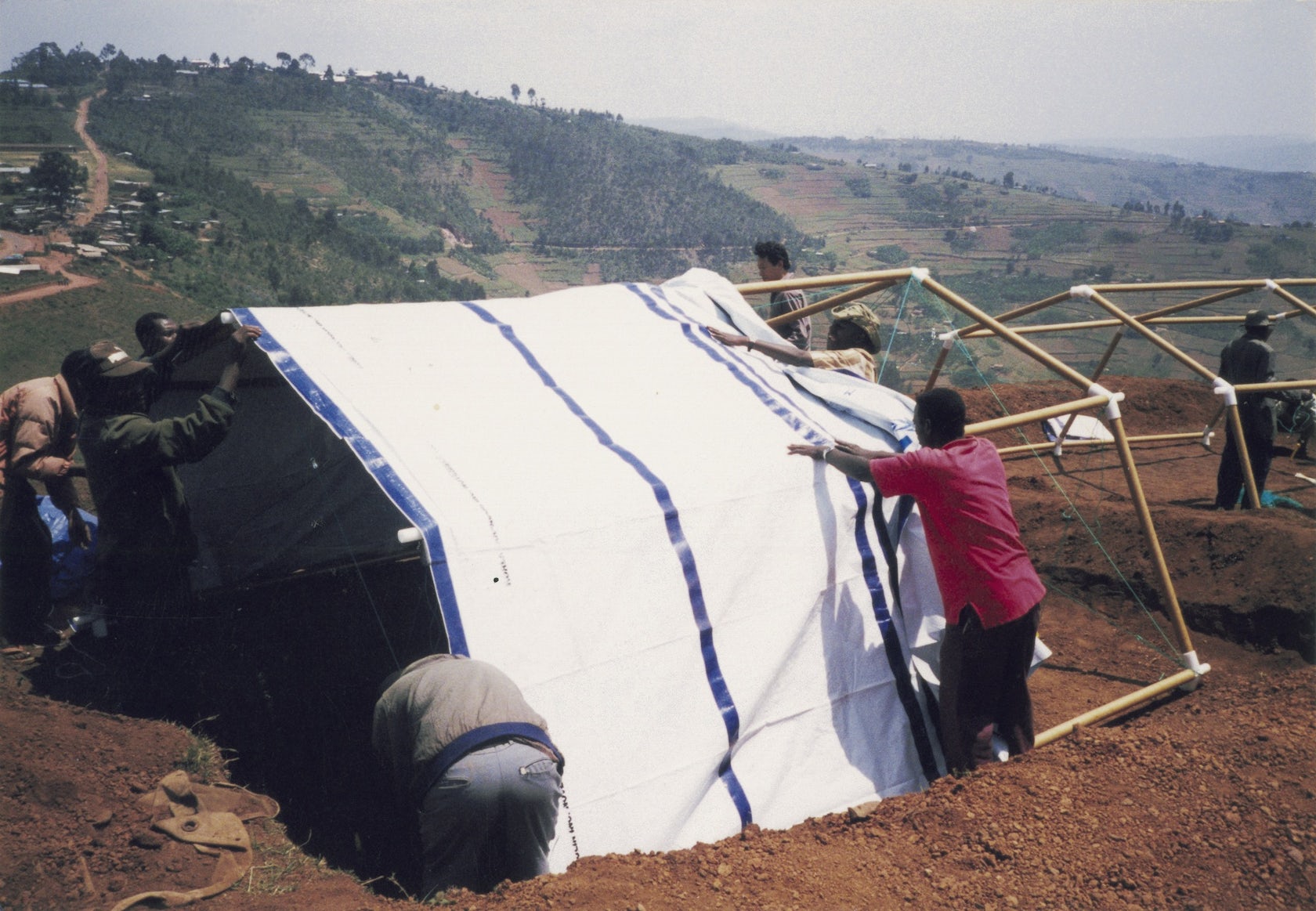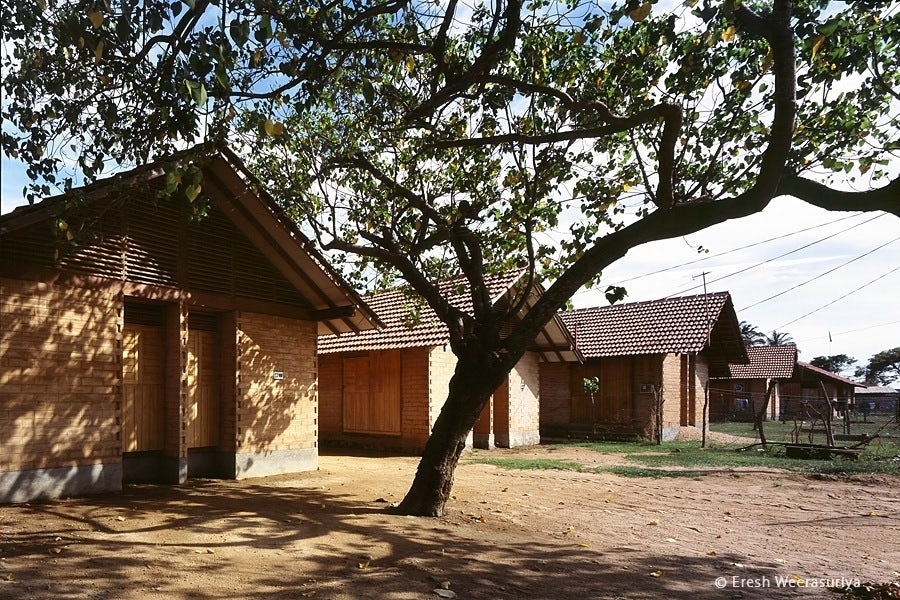For the third year running, Architizer is excited to partner with Sunbrella for the Future of Shade Competition to design beautiful spaces using fabric. With the growing interest and increasingly diverse range of entries in the past two editions of the annual competition, this year sees its expansion to three distinct categories — Humanitarian, Wellness Garden, and Building Shade — and three grand prize winners. Whether you’re an architect or a designer, a professional or a student, enter now for a chance to win one of the three $10,000 grand prizes — we’re looking forward to seeing what you come up with!
The Future of Shade Competition is now open, and with the introduction of three categories for the third edition, we’re excited about the opportunity to explore each category in more detail. First up, the Humanitarian category.
Humanitarian design aims to improve living conditions through shelter in communities plagued by poverty, disease, hunger, and war. This category features design that responds to a social need or cause, from a simple shade to a plan for a tent city. These designs not only apply Sunbrella materials in new ways, they activate it as a solution for shelter during times of crisis or otherwise limited access to resources.

Last year’s Future of Shade winner “XAFARI.” Image courtesy Tony Leung.
The need for shelter and solutions for displacement has never been higher. The number of refugees has grown to over 50 million worldwide, according to a United Nations High Commissioner for Refugees report in 2013. That is the highest number since World War II, and it is climbing steadily as conflicts in North Africa and the Middle East continue to escalate. In Syria, a brutal civil war has driven an estimated nine million people to flee their homes since 2011, mostly to neighboring countries Turkey, Lebanon, Jordan, and Iraq, or inside Syria itself. Refugees can even find their ways to places as far-flung as Sweden, the only EU country to offer full asylum for Syrians.
While the majority of refugees escape to new homes in cities, other displaced families find themselves in ad hoc settlements like Jordan’s Za’atari camp, where some 85,000 refugees have made a temporary tent-city into an apparently permanent mini-metropolis that rivals some of the nation’s biggest cities. A New York Times interactive infographic shows the rapid growth of the city, which has continued to fill out; today, the citizens’ system of roads can be seen on Open Maps. Michael Kimmelman reported on the grassroots urbanism that has sprung up in the city, including citizen-designed structures made of “shelters, tents, cinder blocks and shipping containers, with interior courtyards, private toilets and jerry-built sewers.”

Paper Emergency Shelter for UNHCR. Image via ArchDaily
These types of settlements do not come without problems, of course, and there have even been riots to protest conditions at Za’atari. Now more than ever, professional expertise is needed to tackle these chronic problems. The good news is that humanitarian design is on the rise. Case in point, 2014 Pritzker Prize-winner Shigeru Ban has been recognized for the ingenious paper emergency shelters at Rwanda’s Byumba Refugee Camp, designed for the United Nations High Commissioner for Refugees. During the civil war, inexpensive, termite-resistant paper supports were used to make 50 emergency shelters as prototypes for a system that could be produced cheaply and easily on-site.

Kirinda House. Image © Eresh Weerasuriya, via ArchDaily
Ban’s paper and earthen architecture has also been deployed to combat natural disasters, which can destroy people’s homes in addition to displacing them. In 2004, an earthquake and tsunami destroyed the Sri Lankan village of Kirinda. Ban’s post-tsunami rehabilitation included 67 houses rebuilt with prefab compressed earth blocks they assembled in interlocking layers like LEGOs. They can be built very quickly, and the materials are readily available in the region.
2014 Future of Shade Grand Prize: Xafari from Sunbrella on Vimeo.
Last year’s Future of Shade Competition winner, XAFARI, was also designed to be assembled quickly and cheaply. Innovative for not only offering shade, but also rainwater harvesting, the faceted fabric shelter is made of inverted, retractable “un-brellas” that channel water to low points in the canopy, where it is directed down through a bamboo or steel tube into a below-grade storage bottle, where it can then be stored and later pumped up for irrigation or daily use. “It masterfully created shade while simultaneously creating a water-harvesting device,” said jury member Marc Kushner of Architizer, “This is a win-win-win. It is inspiring to see an architect take one provocation — shade — and spin that into a holistic solution with so many ancillary benefits.”
Since 1961, Sunbrella has produced textiles that offer legendary durability, fade-resistance, and ease of cleaning. But even as they develop new high-performance materials for both indoor and outdoor applications, it is up to designers to put these performance products to use, and humanitarian design may well be one place where it is needed most.
To learn more about the Sunbrella Future of Shade competition and enter for a chance to win $10,000, please see the competition page. See all the winners from 2014 at www.futureofshade.com.









